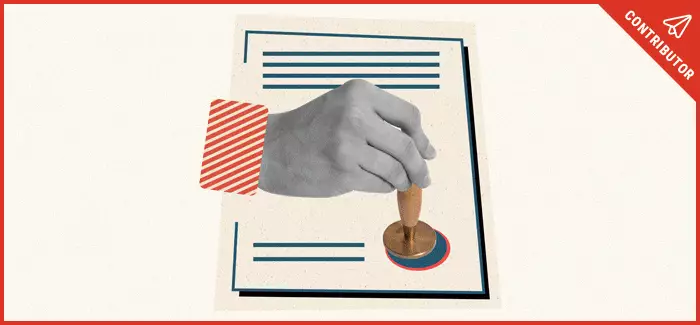Articles > Admissions > What is an articulation agreement?
What is an articulation agreement?

Written by Camilla Andersson

Reviewed by Devin Andrews, Vice President, Office of Admissions & Evaluation, University of Phoenix

An articulation agreement simplifies the process of transferring college credits and can potentially help students save both time and money. Let’s walk through how these agreements work.
How does an articulation agreement work?
If you’re getting ready to transfer to a university, you may wonder: How many of my college credits are coming with me?
It’s a question plenty of people ask as students change schools, programs and plans according to their lives and goals. Fortunately, colleges and universities anticipate this and enter into agreements with one another called articulation agreements (also known as transfer agreements).
These agreements between educational institutions establish which credits will transfer and how. They serve a different purpose and are more detailed than a Memorandum of Understanding (MOU), which may appear similar but is not a legally binding contract.
These agreements may benefit:
- Students, who might save time and money by applying credits from classes they’ve already taken to their new university
- The two-year college, which can attract more students by promoting the agreements and the transfer rates to different universities
- The four-year university, which might spend less money on outreach to prospective students and can build a pipeline of new transfer students.
Behind the scenes, however, the process of forming an agreement can be complex and time-consuming. This is because both institutions research each other to make sure that the agreement is a good fit.
Different types of articulation agreements
Two types of transfer agreements are general and program-specific:
1. General agreements focus on general education classes that will transfer.
2. Program-specific agreements specify which classes for specific programs will transfer and how.
Some agreements detail both general education and program-specific classes that will transfer.
These agreements often include a transfer pathway document or table, sometimes called a transfer guide. This outlines the classes that will transfer and how, giving students a clear and brief overview of the path forward so that they can plan ahead.
Some transfer pathways are for the same subject, for example from an Associate Degree in Nursing to a Bachelor of Science in Nursing. Others exist for different but related programs; for example, an Associate of Arts in Public Health to a Bachelor of Science in Health Management. There are options, in other words, for a variety of situations.
An agreement can include one or more transfer pathways for different programs. It may even include several transfer pathways for the same associate degree, so plan ahead to determine what degree program and concentration you want to choose at the university level.
Other types of transfer agreements include guaranteed admission, which guarantees students of one school admission to another one; and dual enrollment programs, which allow students to pursue two different degrees, for example an associate and bachelor’s degree, at the same time.
Agreements between two institutions are called bilateral agreements, while those between more than two are called multilateral agreements. An agreement that is developed by a state and that involves several public colleges and universities is called a comprehensive articulation agreement.
Finding a school’s articulation agreement
To find out if your current and potential transfer schools have an agreement, you can use the following resources:
- Visit the schools’ websites. Sometimes institutions post their agreements online.
- Look for transfer pathway documents. Some universities post these online instead of, or in addition to, the complete agreement.
- Visit the website for the Department of Education in your state (or transferring state).
- Use a reputable online tool that details articulation information for different schools.
- Talk to your academic advisor or college counsel, or visit your new institution’s transfer center (if available).
- Ask the enrollment representative or speak with the admissions office at the school you’ll be transferring to if one is available.
Once you find the agreement or transfer pathway document, make sure you understand how to read it. For example, review the fine print and look for specifics, such as:
- Make sure it’s not expired. If you come across one for a semester that has passed, be aware that institutions sometimes remove or add classes to their agreements.
- Check if a specific grade is required for the class to transfer. Many universities only accept credits for a class in which you received a grade of C or higher, for example.
- See if there is a limit on how many credits you can transfer for a specific subject, and find out what the cap is for total transfer credits allowed.
- Identify how credits are calculated. Units at a school with a quarter system (when the academic year is divided into fall, winter, spring and summer) will transfer differently than units at a school that uses a semester system.
Credit transfer process
Completing the first few years at a community college and then transferring to a university can offer several benefits. Besides the possibility of saving money on tuition, you might also qualify for a new scholarship at the institution you transfer to. (Some schools offer scholarships specifically for transfer students, for example.)
So, how do you make the transfer of college credits happen? If your new school doesn’t have a transfer agreement with your prior school, you’ll need to reach out to the institution you’ll be transferring to, typically when you apply, and submit your transcripts or request that the university obtain them and then wait to find out which credits will transfer. You may be able to request a preevaluation by submitting your unofficial transcripts, but the decision is not final until after you submit your official transcripts.
With an agreement in place, you might have to go through the same process, but you’ll have a better idea how your coursework may transfer (as long as you avoid exceptions such as the ones outlined earlier). The formal process of approving your previous classes is called articulation approval or official evaluation.
College credits can be divided into three parts: general education credits, core course credits for your degree program and elective credits. A degree typically requires a certain number of credits in each of the three areas with a minimum grade, often a C or higher. However, academic policies differ depending on the institution.
An agreement will specify which classes in the transfer pathway will count toward your degree program or general education. Sometimes your credits may be applied toward your elective credits, especially if you have excess credits that would apply to one category or another.
Are you ready to see if your credits transfer with an articulation agreement?
Don’t wait until you fill out the admission forms to find out if your credits will transfer to University of Phoenix. Start by using one of the following online resources to get more information:
- Check with your current school to see if credits transfer to University of Phoenix.
- Use our Institution Finder
to see if credits from your school have transferred to UOPX.
- Learn about the 3+1 transfer pathway
designed for community college students, which helps them complete their degree at University of Phoenix in about a year.
- Download University of Phoenix’s Transfer Guide
for detailed instructions on how to transfer credits.
Do you have more questions about a transfer articulation agreement or how to transfer to UOPX? Get in touch with an enrollment representative today!
Read more articles like this:

ABOUT THE AUTHOR
Camilla Andersson is a writer with a degree in journalism. She has written and edited content for trade magazines, blogs, white papers and newsletters. Camilla lives in Los Angeles and is a graduate of San Francisco State University. She grew up in Sweden, where she published her first work, an op-ed in the newspaper Aftonbladet, at the age of 15.

ABOUT THE REVIEWER
Devin Andrews is the vice president of admissions and evaluation at University of Phoenix. She has experience leading University-wide initiatives related to technology and innovation to improve outcomes for diverse stakeholders, including improving the experience for transfer students and increasing credit for prior learning through improved awareness, experience and cost-savings measures for students. She holds a bachelor’s degree in political science from University of Arizona and a Master of Business Administration and Master of Arts in Education from University of Phoenix.
This article has been vetted by University of Phoenix's editorial advisory committee.
Read more about our editorial process.

